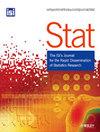机器协作
IF 0.8
4区 数学
Q3 STATISTICS & PROBABILITY
引用次数: 0
摘要
我们提出了一种新的监督学习集合框架,称为机器协作(Machine Collaboration,简称 MaC),它使用一系列可能异构的基础学习方法(以下简称基础机器)来完成预测任务。与bagging/stacking(并行和独立框架)和boosting(顺序和自上而下框架)不同,MaC是一种循环和递归学习框架。循环和递归的特性有助于基础机器循环传递信息,并相应地更新其结构和参数。关于MaC估计器风险边界的理论结果表明,循环和递归特性可以帮助MaC通过准集合降低风险。我们使用模拟数据和 119 个基准真实数据集对 MaC 进行了大量实验。结果表明,在大多数情况下,MaC 的性能明显优于其他几种最先进的方法,包括分类和回归树、神经网络、堆叠和提升。本文章由计算机程序翻译,如有差异,请以英文原文为准。
Machine collaboration
We propose a new ensemble framework for supervised learning, called machine collaboration (MaC), using a collection of possibly heterogeneous base learning methods (hereafter, base machines) for prediction tasks. Unlike bagging/stacking (a parallel and independent framework) and boosting (a sequential and top-down framework), MaC is a type of circular and recursive learning framework. The circular and recursive nature helps the base machines to transfer information circularly and update their structures and parameters accordingly. The theoretical result on the risk bound of the estimator from MaC reveals that the circular and recursive feature can help MaC reduce risk via a parsimonious ensemble. We conduct extensive experiments on MaC using both simulated data and 119 benchmark real datasets. The results demonstrate that in most cases, MaC performs significantly better than several other state-of-the-art methods, including classification and regression trees, neural networks, stacking, and boosting.
求助全文
通过发布文献求助,成功后即可免费获取论文全文。
去求助
来源期刊

Stat
Decision Sciences-Statistics, Probability and Uncertainty
CiteScore
1.10
自引率
0.00%
发文量
85
期刊介绍:
Stat is an innovative electronic journal for the rapid publication of novel and topical research results, publishing compact articles of the highest quality in all areas of statistical endeavour. Its purpose is to provide a means of rapid sharing of important new theoretical, methodological and applied research. Stat is a joint venture between the International Statistical Institute and Wiley-Blackwell.
Stat is characterised by:
• Speed - a high-quality review process that aims to reach a decision within 20 days of submission.
• Concision - a maximum article length of 10 pages of text, not including references.
• Supporting materials - inclusion of electronic supporting materials including graphs, video, software, data and images.
• Scope - addresses all areas of statistics and interdisciplinary areas.
Stat is a scientific journal for the international community of statisticians and researchers and practitioners in allied quantitative disciplines.
 求助内容:
求助内容: 应助结果提醒方式:
应助结果提醒方式:


